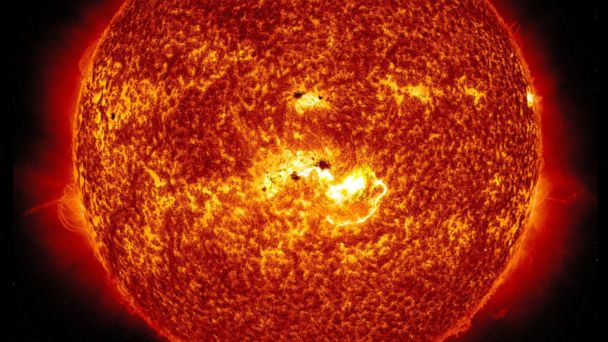Solar Storm Arrives
ABC's Gina Sunseri and Clayton Sandell report:
The solar storm that's been hurtling a billion tons of material toward our planet at two million miles per hour is now slamming into Earth's atmosphere, NOAA's Space Weather Prediction Center tells ABC News.
For the next 24 hours forecasters say a "strong" geomagnetic storm could cause navigation and communication problems for satellites, radio dropouts for ships and planes in polar regions, and might affect GPS navigation systems and satellite radio. Airlines are already avoiding polar routes to keep passengers and crew from elevated levels of radiation.
"It's significant, but it's not the mother of all storms," said NOAA space scientist Joe Kunches. "The good news is that people with GPS in their cars probably won't see much of an effect."
Kunches says the aurora will also be seen further south than normal. You can check the map here: http://helios.swpc.noaa.gov/ovation/
Geomagnetic and solar radiation storms are rated like hurricanes, and the geomagnetic storm hitting now is considered an "S-3?, in the middle of the scale, with 5 being the most extreme.
Our planet isn't out of the woods yet. The area of the Sun where this storm originated 48 hours ago will still be a threat for about another week until it rotates away from Earth, said Kunches.
Polar regions are especially affected. Kunches says that if this storm had occurred during last week's rescue attempt of researchers stuck in ice near Antarctica, communications would have likely been severely impacted.
NASA postponed the Wednesday launch from Virginia's eastern shore of the Cygnus cargo spacecraft, scheduled to deliver supplies to the International Space Station, because of the radiation. Cygnus launched today and is scheduled to arrive at the space station early Sunday.
